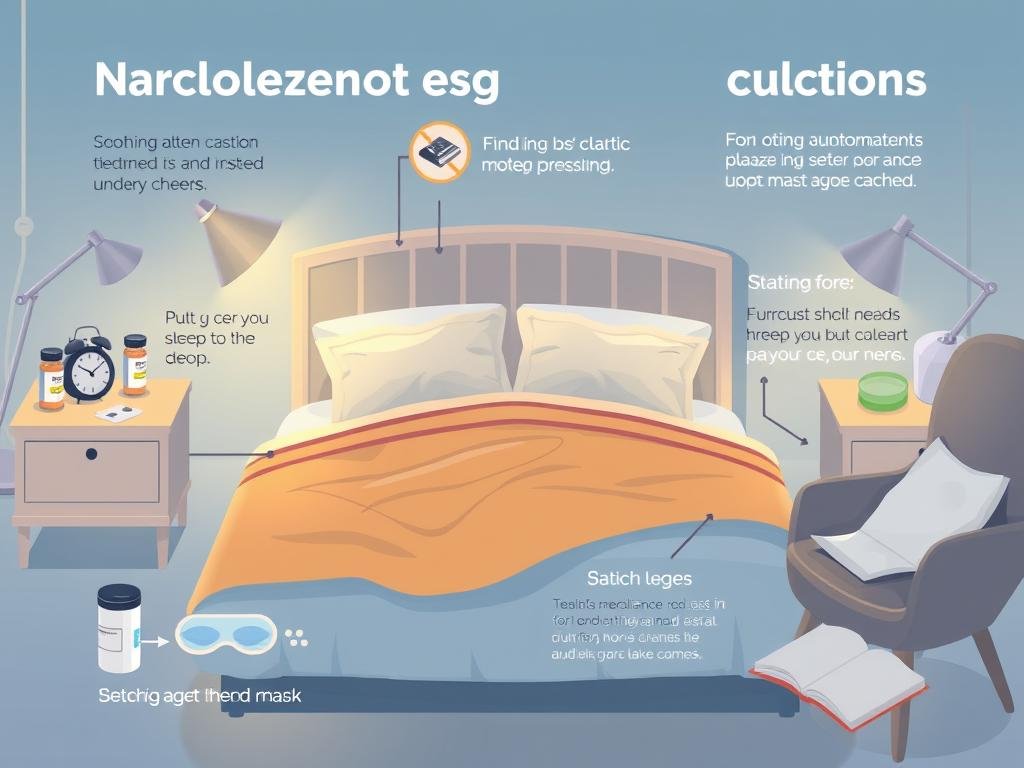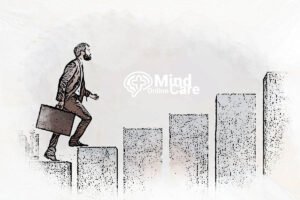Have you ever found yourself suddenly overcome by an irresistible urge to sleep, even in the middle of an important task or a lively conversation? If so, you may be one of the many individuals affected by the enigmatic sleep disorder known as narcolepsy. But what exactly is narcolepsy, and how can we better understand its underlying causes and available treatments? Let’s dive in and unravel the mysteries of this intriguing condition.
Key Takeaways
- Narcolepsy is a chronic sleep disorder characterized by excessive daytime sleepiness and sudden, uncontrollable urges to sleep.
- The main symptoms of narcolepsy include sleep attacks, cataplexy (sudden loss of muscle tone), hypnagogic hallucinations, and sleep paralysis.
- Narcolepsy is caused by a deficiency of the neurotransmitter orexin, which regulates sleep and wakefulness, and is often associated with genetic and environmental factors.
- Narcolepsy is classified into two main types: type 1 (with cataplexy) and type 2 (without cataplexy).
- While there is no cure for narcolepsy, various treatments and lifestyle modifications can help manage the symptoms and improve quality of life.
What is Narcolepsy?
Defining Narcolepsy
Narcolepsy is a chronic neurological disorder that affects the brain’s ability to regulate sleep-wake cycles. People with narcolepsy experience excessive daytime sleepiness and may suddenly fall asleep during normal daily activities. Narcolepsy is characterized by an inability to properly control the transitions between different sleep stages, particularly rapid eye movement (REM) sleep.
This disorder leads to a range of symptoms, including cataplexy (sudden loss of muscle tone), sleep paralysis, and hallucinations. Narcolepsy is a sleep disorder that impacts an individual’s sleep-wake cycles and can significantly disrupt daily life.
According to recent data, the prevalence of narcolepsy type 1 is 14 per 100,000 people, while narcolepsy type 2 is 65.4 per 100,000 people. Close to 50% of patients develop symptoms in their teenage years, and the incidence of narcolepsy is highest in the late teens to early twenties.
Interestingly, female predominance is 50% greater in the U.S. for narcolepsy, and the average time from onset of symptoms to diagnosis is about 15 years. Genetic factors, such as the HLA haplotype DQB1*0602 present in 95% of narcolepsy type 1 patients, as well as environmental triggers, like antibodies against streptococcal infections, have been associated with the development of this sleep disorder.
Ultimately, narcolepsy is a complex condition that significantly impacts an individual’s ability to maintain a healthy sleep-wake cycle, leading to a range of debilitating symptoms that can profoundly affect their daily life and overall well-being.
Symptoms of Narcolepsy
Narcolepsy is a chronic sleep disorder characterized by a range of debilitating symptoms that can significantly impact daily life. The primary symptoms of narcolepsy include:
- Excessive Daytime Sleepiness (EDS): This is often the first noticeable symptom, causing sudden and uncontrollable episodes of falling asleep during the day, even when engaged in activities.
- Cataplexy: Temporary muscle weakness or loss of muscle control, usually triggered by strong emotions like excitement or laughter.
- Sleep Paralysis: A temporary inability to move or speak that occurs when waking up or falling asleep.
- Hallucinations: Vivid, dream-like experiences that can occur when falling asleep (hypnagogic) or waking up (hypnopompic).
- Automatic Behavior: Continuing to perform an activity without conscious awareness, such as driving or writing, during an episode of excessive sleepiness.
- Fragmented Sleep: Disrupted nighttime sleep, which can lead to insomnia and daytime fatigue.
These symptoms can vary in frequency and severity among individuals with narcolepsy. Some may experience them regularly, while others may be less affected. Narcolepsy is typically a chronic condition that can develop gradually over years or suddenly within weeks.
Early diagnosis and effective management of narcolepsy symptoms are crucial to improving quality of life and reducing the risk of accidents or injuries. Treatment often involves a combination of medications, lifestyle changes, and behavioral strategies to help individuals with narcolepsy maintain alertness and manage their condition.
| Symptom | Description | Impact |
|---|---|---|
| Excessive Daytime Sleepiness (EDS) | Sudden, uncontrollable episodes of falling asleep during the day | Significantly disrupts daily activities and increases the risk of accidents |
| Cataplexy | Temporary muscle weakness or loss of muscle control, often triggered by emotions | Can lead to falls or injury, and negatively impact social and work life |
| Sleep Paralysis | Temporary inability to move or speak when waking up or falling asleep | Can be frightening and disrupt sleep, leading to further daytime fatigue |
| Hallucinations | Vivid, dream-like experiences that occur when falling asleep or waking up | Can be disorienting and distressing, especially for children and adolescents |
| Automatic Behavior | Continuing an activity without conscious awareness during an episode of sleepiness | Can be dangerous, particularly when performing tasks like driving or operating machinery |
| Fragmented Sleep | Disrupted nighttime sleep, leading to insomnia and daytime fatigue | Contributes to the overall sleep disturbances and excessive daytime sleepiness |
Causes and Risk Factors of Narcolepsy
Understanding the Causes
The exact cause of narcolepsy is not fully understood, but it is believed to involve a combination of genetic and environmental factors. In type 1 narcolepsy, there is typically a loss of the brain chemical hypocretin, which helps regulate sleep and wakefulness. This loss is often linked to an autoimmune reaction where the body’s immune system mistakenly attacks the hypocretin-producing cells.
Genetics also play a significant role in narcolepsy. Individuals with certain variations in the HLA gene family have an increased risk of developing the condition. Rare instances of narcolepsy can also be caused by brain injuries or other neurological conditions that affect the areas responsible for sleep-wake cycles.
- Immune system problem: Some individuals with narcolepsy produce antibodies against a protein called trib 2, leading to a lack of hypocretin in the brain, contributing to disrupted sleep cycles.
- Possible triggers: Factors that may increase narcolepsy risk include genetic faults, hormonal changes, stress, sudden alterations in sleep patterns, infections (e.g., swine flu, streptococcal infections), and even specific vaccines like Pandemrix.
- Pandemrix vaccine: There is a small risk (estimated at 1 in 52,000) of developing narcolepsy in children following the administration of the flu vaccine, Pandemrix, which was used during the 2009-2010 swine flu outbreak.
While the exact mechanisms are not fully understood, the interplay between genetics, autoimmune disorders, and environmental factors appears to play a crucial role in the development of narcolepsy.
Types of Narcolepsy
When it comes to narcolepsy, there are two main types that individuals may experience: type 1 narcolepsy and type 2 narcolepsy. Understanding the differences between these two forms of the condition is crucial for proper diagnosis and effective treatment.
Type 1 Narcolepsy
Type 1 narcolepsy, previously known as narcolepsy with cataplexy, is characterized by low levels of the brain chemical hypocretin and the presence of cataplexy – sudden muscle weakness triggered by strong emotions. This form of narcolepsy is generally easier to diagnose due to these distinctive symptoms.
Type 2 Narcolepsy
Type 2 narcolepsy, previously referred to as narcolepsy without cataplexy, involves excessive daytime sleepiness but typically does not include cataplexy. Individuals with this type of narcolepsy have normal hypocretin levels, making it more challenging to diagnose.
In addition to these two primary types, there is also a rare form called secondary narcolepsy, which can be caused by factors such as brain injuries, tumors, multiple sclerosis, or encephalitis. Individuals with secondary narcolepsy may require more than 10 hours of sleep per night.
“Narcolepsy might result from immune system attacks on the hypocretin-producing part of the brain. Genetic factors can also increase the risk of developing narcolepsy.”
Researchers believe that narcolepsy can be triggered by an autoimmune response, where the body’s immune system attacks the part of the brain responsible for producing hypocretin. Genetic factors, such as changes in the T-cell receptor gene and human leukocyte antigen complex, can also contribute to an elevated risk of developing the condition.
Understanding the different types of narcolepsy is crucial for ensuring accurate diagnosis and tailored treatment approaches. By recognizing the unique characteristics of each form, healthcare professionals can provide more effective management strategies to improve the quality of life for individuals living with this complex sleep disorder.
Treatments and Management of Narcolepsy
Therapeutic Options
While there is no cure for narcolepsy, various treatments and management strategies can help alleviate symptoms and improve quality of life for those affected. Medications play a crucial role in managing the condition, with stimulants, wake-promoting agents, and sodium oxybate commonly prescribed to address excessive daytime sleepiness and cataplexy.
Lifestyle changes, such as maintaining a consistent sleep schedule, practicing good sleep hygiene, and identifying and avoiding triggers for cataplexy, can also be highly beneficial. Additionally, emotional and social support from family, friends, and healthcare providers can help individuals with narcolepsy cope with the challenges of the condition.
Stimulants like modafinil and armodafinil are primary treatments to help individuals with narcolepsy stay awake during the day, with newer stimulants like solriamfetol and pitolisant also being used. Antidepressants and serotonin/norepinephrine reuptake inhibitors can suppress REM sleep and help with symptoms like cataplexy and hallucinations. Sodium oxybate and oxybate salts are effective in relieving cataplexy and improving nighttime sleep, although they can have side effects like nausea and sleepwalking.
- Maintain a consistent sleep schedule
- Practice good sleep hygiene, such as creating a relaxing sleep environment
- Identify and avoid triggers for cataplexy
- Seek emotional and social support from family, friends, and healthcare providers
By working closely with healthcare professionals and implementing a comprehensive treatment plan, individuals with narcolepsy can effectively manage their symptoms and improve their quality of life.

“The key to managing narcolepsy is finding the right combination of medications, lifestyle changes, and emotional support to meet your individual needs.”
Conclusion
As we have learned throughout this article, narcolepsy is a chronic sleep disorder that can significantly impact an individual’s daily life. With a prevalence of up to 1 per 1,000 individuals, narcolepsy affects approximately 250,000 Americans, making it as prevalent as multiple sclerosis.
While the symptoms of narcolepsy, including excessive daytime sleepiness, cataplexy, and sleep paralysis, can be challenging to manage, we now have a better understanding of the underlying causes and available treatment options. The latest research, as discussed in this article, has shed light on the role of orexin-producing neurons, genetic predispositions, and environmental factors that contribute to the development of this condition.
By working closely with healthcare providers, individuals with narcolepsy can develop an effective management plan to mitigate the impact of this disorder on their daily lives. With continued advancements in research and treatment, we are optimistic that the burden of narcolepsy can be further reduced, allowing those affected to lead fuller and more productive lives.






